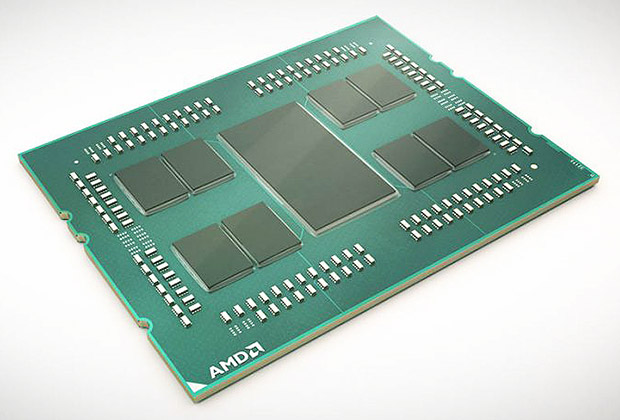Like many of you, I’m tired of being upset about mass shootings and the government’s seeming lack of progress to end them. I’m particularly tired of the partisan bickering around talking points that have no basis in fact. The left wants this to be about guns. The right, fearing that this effort will reduce gun sales, wants to blame mental illness and video games.
What is needed is deep analysis to look at the causes, craft a fact-based solution, and then implement it. To do that, an organization like the CDC needs to do an in-depth analysis of the problem — but the right, fearing (wrongly, I think) that the CDC will conclude the problem is “guns,” effectively has blocked any effort to conduct an analysis.
The United States is the technology leader of the world. Yet for problems like this, instead of using technology, it is using a bunch of preconceptions not backed up by data. Things easily could get far worse.
For instance, in the same issue of The Washington Post where I read about last week’s shootings, there was coverage of a person who killed 20 people with a car instead of using a gun.
My fear is that if we don’t get to the underlying problem, killers will just shift from a weapon set that kills individually (guns) to a weapons set that kills en masse (bombs, cars, heavy equipment, etc.). The goal isn’t to stop gun sales — it is to keep people safe.
Analytics could tell us how; it amazes me that the U.S. not only is neglecting to use the technology it is famous for, but also that public officials actively are preventing anyone from using it for this purpose.
I’ll close with my product of the week: the Epyc 2, a new processor from AMD that just changed the power dynamics in the server market and will help with the analytics needed to address mass killings effectively.
Parsing the Problem
I grew up in a very different world. When I was a kid we grew up with guns. We could take knives to school (mostly Swiss Army knives) and it wasn’t an issue. I don’t recall anyone bringing a gun to class, but that was because kids weren’t supposed to use them without supervision.
The NRA was focused on gun safety rather than gun sales, and we arguably were safer. The high schools I went to didn’t look like armed forts, and fights left bruises and not dead bodies.
So, a key part of analyzing the problem is figuring out what occurred over the last 50 or so years that changed the world of my youth into the world kids today are experiencing. It likely isn’t guns, because they haven’t changed that much.
There were some mass killings years ago, but they were pretty much isolated to religious fanaticism or carried out by people we believed were crazy. Also, we were closer to major wars, which educated people better on the results of extreme violence.
My parents and grandparents had been in the military, which taught weapon handling and proper care, something that appears to be sadly lacking with kids today.
We didn’t have the Internet or social media, both of which have become homes for extreme ideas and a set of hostile behaviors I didn’t see as a child. Yes, there certainly were bigots and bullies then, but they mostly annoyed their family’s neighbors and acquaintances. Today, with social media and the Internet, they can impact massive audiences.
We didn’t have video games, but video games — at least right now — don’t teach you how to shoot. So far, studies haven’t been able to connect them as a cause of mass shootings. (Be aware that some recent studies suggest this is nuanced).
Video games may be more effective as an outlet for violence than a cause of it, though, and if that is true, eliminating them might have an adverse impact rather than a positive one.
What We Know (Facts)
Here is what we know: We know video games don’t seem to lead to violence. We know the causes of mass shootings are varied. They do include mental illness, but in most of the cases I’ve looked at, no one was able to take timely action in spite of substantial early indications that a problem was coming.
We know that gun-free zones have been targeted specifically of late, and we know that in regions in the world where gun ownership is not common, attackers use explosives, vehicles and knives instead.
The largest domestic attack in the U.S. used weaponized fertilizer, and the death count exceeded any mass shooting so far.
We also know that when gas stoves were fixed so they couldn’t easily be used for suicides, people shifted to guns, cars, and other methods. That change didn’t eliminate the desire to commit suicide — it just forced a toolset change.
I’m not defending guns here. I’m just pointing out that — given what we know — eliminating them without knowing the unintended consequences could, from the standpoint of risk to our kids or us, make things worse. That kind of irony we don’t need.
This shouldn’t be about the left or right winning an election — this should be about making our world safer. The only way to do that is to attempt to understand the causes of domestic terrorism so we can move to eliminate the causes.
To be clear, I believe both political parties are wrong here because neither has done the work to determine the real cause. The left focuses on the tool, and the right pulls causes out of their collective butts. That does not — particularly in our technology and increasingly data-driven world — solve problems.
Applied Technology
I support the CDC doing this research. The right’s concern that the CDC is biased is unfounded, and that would represent a bigger threat. If the CDC isn’t trustworthy, we have a far bigger problem than mass shootings, given that it is our first line of defense against a pandemic.
So, if the CDC isn’t reliable and unbiased, then fixing that should come first — but I have no evidence that is the case. It appears that the concern stems from fear of what its conclusions would be.
It certainly is likely it would conclude that a lack of a qualifying process to ensure that gun users were properly trained and didn’t have mental issues that would make them dangerous (history of violence, anger control issues, etc.) contributed to the problem.
The irony for me now is that when I was young, that also was the position of the NRA. (The shift away from that, along with the fact that our NRA donations increasingly appeared to be going to enrich NRA leaders is why many of us stopped belonging.)
Once we have established causality, we can craft remedies that will reduce mass killings — not just get a politician elected. We can run realistic simulations, making changes in the virtual world to test theories, so we don’t have to put actual people at risk if our theories regarding remedies don’t have the intended outcome.
For instance, you have someone who has been on the wrong side of a red flag law, and you remove their guns. What does that person then do? Does that individual get more upset and buy another gun illegally? Does the person use a car or learn how to build a bomb instead? It’s possible to simulate things like that now and test these theories without putting real people at risk.
If you wanted to discredit some of the more foolish suggestions, you could run them in a simulation with an active shooter. You could use simulations regularly to train both the folks guarding schools and the kids attending them. (If you had an issue where a guard might fail under pressure, a simulation could surface that issue before the person would be called upon to act in an actual event.)
Applied Protection
Both BlackBerry and Intel last week highlighted technologies that could keep kids safer if they were applied broadly. BlackBerry has several technologies that could keep kids safer. AtHoc is an emergency alerting system designed to alert and guide during any disaster, including a school attack, for instance.
The one BlackBerry announced last week is Intelligent Security, which looks at behavior and sends alerts if that behavior changes.
While this technology currently is designed to prevent theft, it also could be applied to identify a student who suddenly was acting strangely. This information would provide an early alert that something critical was wrong (and that could include students as attackers, as the ones being attacked, or being kidnapped, or having their identities compromised).
Intel, with Honeywell, spoke about an artificial intelligence inferencing technology using a variant of facial recognition to identify people with firearms, and immediately sending an alert if an armed individual were approaching a monitored site (I’m kind of surprised that schools don’t have that now).
This same technology likely could identify where the shooter was located, point first responders to both the attacker and the most injured, and be a huge part of a semi-automated response.
This likely would be more reliable and cheaper than the proposal to increase the number of guards massively. (We know that guards become complacent over time and may fail in the face of real danger.)
Wrapping Up: Data Is Our Friend
We are in a data-rich world. Our ability to analyze and understand massive amounts of data is unprecedented in breadth and scope. Yet for our most important decisions, like protecting our kids, we are divided because we come up with solutions before we even understand the problem.
You don’t fix things by throwing whatever comes to your mind at them. This would be like giving your 6-year-old kid a set of tools and telling him the car wasn’t working so he should go fix it. That kind of BS makes things worse.
We have the tools to analyze this issue fully, and it is an issue that is only tied to guns in this country. In other countries, the issue still exists but they use other tools. Each state in the U.S. is the equivalent of a country elsewhere, so it’s necessary to parse the information to make it like to like. It doesn’t make sense to compare the U.S. to Australia, which is smaller than many states.
If the solution comes from the research, there would be a far greater probability of success. Even if it wasn’t successful, this is an iterative process we can undertake through simulation, so a bad idea that looks like a good idea can be identified before someone dies.
Let’s shift from what isn’t working to something we know will work because our ignorance is costing us our future. Our kids, not any political party, are our future.
I have never seen a rout like I saw last week at the AMD Epyc 2 launch. For almost my entire professional life AMD has been playing second fiddle to Intel, and last week it took over the orchestra.

The most compelling part was that for each segment it had major players like HPE, Dell Technologies, Google, Microsoft and Lenovo all validating that its new processor was up to twice as fast as Intel’s comparable part. What also was amazing was that AMD often was half the price.
This reminds me of the 2020 Corvette I spoke about last week, in that the Corvette is not only faster than most supercars, but also a fraction of the price — and it looks like a supercar. You don’t see this often.
I complain a lot about CEOs who aren’t doing their jobs and are hurting employees, customers and investors. Lisa Su, AMD’s CEO, arguably is one of the strongest counterpoints out there, in that she and her team just hunkered down and got the job done.
This column is about applied analytics making our kids safer. When Cray’s presenters got on stage, they indicated their new supercomputer based on the Epyc 2 part would outperform 100 supercomputers now in the market collectively, and it could do in seconds what it took the company’s prior-generation supercomputer 28 days to accomplish.
That is seriously kicking butt, and it is a testament, on paper, to AMD’s move in its space being bigger than what Apple did to the smartphone market when it announced the iPhone.
It is that kind of massive performance and cost advantage that will give us the computational capability to solve problems like mass killings, and that this kind of power could be used to solve many of the critical analytical problems facing the world today.
These problems include not only mass killings, but also global warming, better weather prediction, medical research, traffic and defense. AMD’s Epyc 2 launch was, well, epic — and that makes it my product of the week.

























































a mass shooting is a very big issue in the US.goverment should find out a way to resolve this with the use of new technological innovation